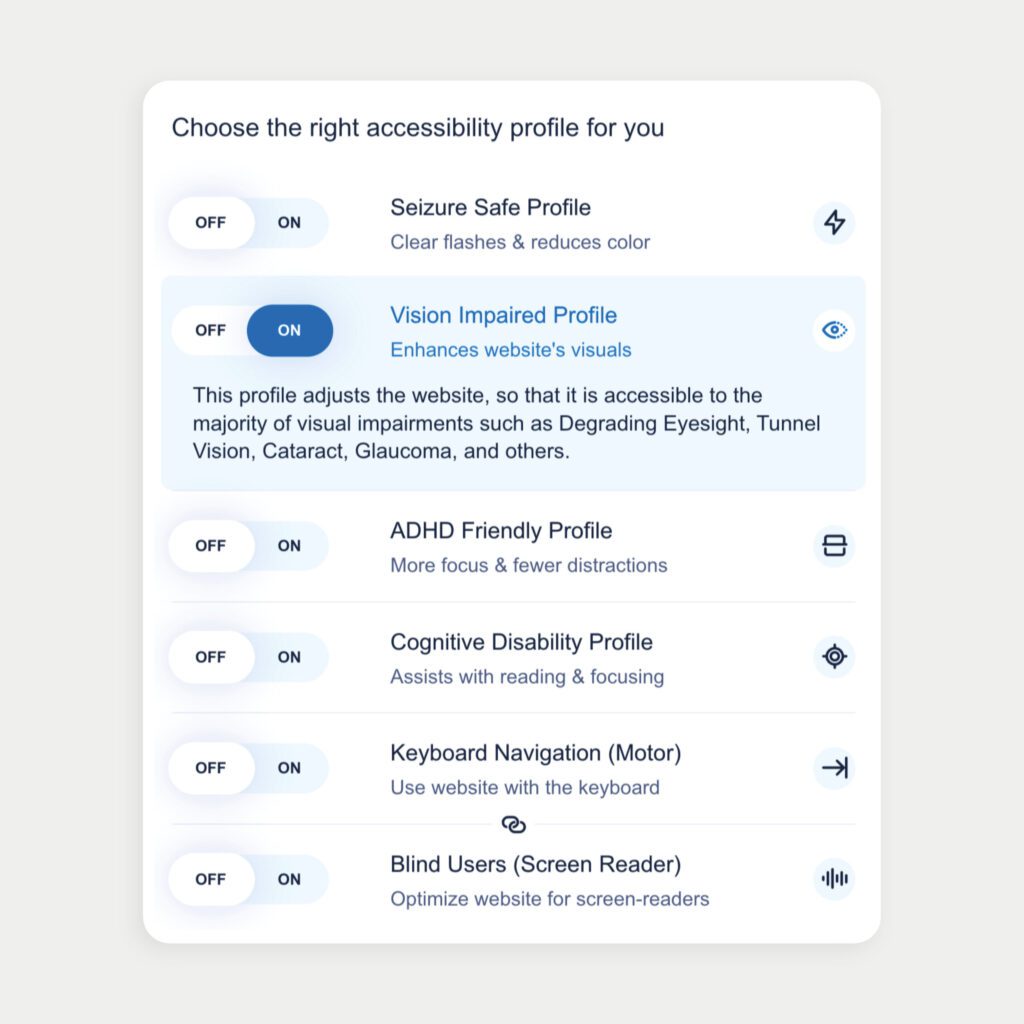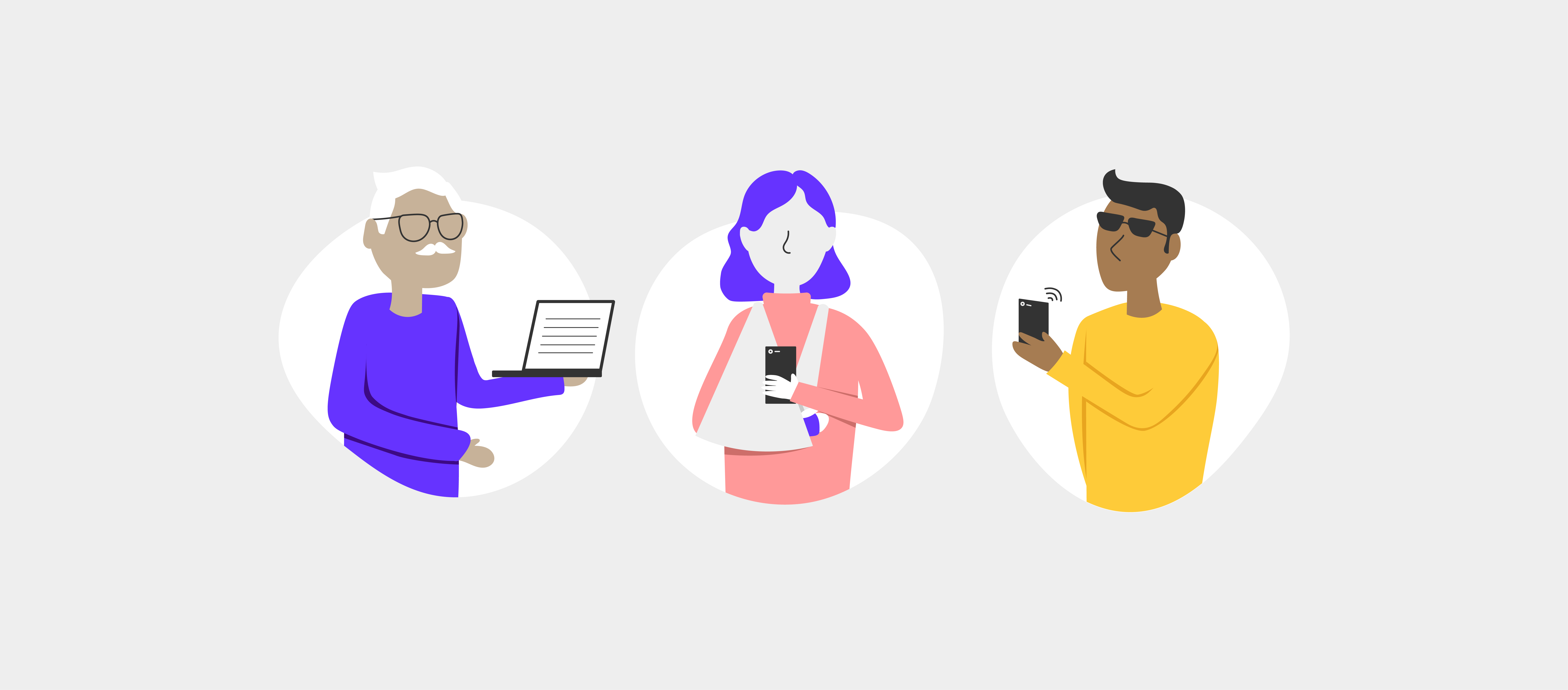Page content
Years ago, when I was still in school, the term ‘accessibility’ started gaining momentum as this new and hip thing. The design teachers were all about considering color blindness in user interface design, while the developers instructed us to include alt tags while coding for screen readers. A good start to learn about inclusiveness, you’d say! However, I also remember nobody really caring about any of it. Everybody wanted website design to pop, and inclusiveness just wasn’t cool enough. Well, everybody back then was a fool.
During my years as a UX designer and developer, I have learned the crucial importance of inclusiveness, which is so much more than colors and alt text. And accessibility is just the tip of the iceberg. It is all about the people. And more specifically, about (not) missing out on your target audience. That is what we want at Quest – websites to pop for everyone.
What is inclusive design?
Inclusive design is a human-centered design approach that aims to embrace the whole range of human diversity. It considers cultural, social, and other needs, way past those of the perceived ‘average’ user. Inclusive design principles focus on exploring ways of taking into account a full spectrum of people to ultimately accommodate a diverse market and audience. This includes developing different solutions for different needs when necessary.
Universal design vs inclusive design
Accessibility and inclusivity are crucial in making sure that everyone can use a specific product or solution. Accessibility standards take into account a wide variety of (dis)abilities and needs. Variety is a crucial word here. For instance, there are so many ways in which one can be visually impaired: being blind is extremely different from being far-sighted or colorblind. To deal with these kinds of difficulties, UX designers make use of WCAG 2.1 standards (and soon, WCAG 2.2!). Web Content Accessibility Guidelines define how to make Web content fit for people with special needs covering a wide range of impairments, including visual, auditory, physical, speech, cognitive, language, learning, and neurological.
Universal design refers to the development of a single solution suitable to the greatest extent possible to all people regardless of their age, size, (dis)ability. Developed in 1997, the 7 Principles of Universal Design guide the design of environments, products, and communications. The notion of universal design originally comes from industrial and product design, and only more recently has expanded to include digital solutions and services.
The difference between inclusive design and universal design is the idea that it is possible—and actually preferred—to develop different solutions to respond to the needs of different groups of people, rather than a one-size-fits-all approach.
Are struggling to make your website more inclusive?
Let us guide you toward a more inclusive digital experience that is accessible to everyone.
Hand-in-hand with sustainable web design
For the longest time, it was believed that digital was greener than print. Luckily, there’s now a growing awareness of the negative impact digital products have on the planet. About 2% of global greenhouse gas emissions are coming from the internet every year. To put this into perspective, if the internet was a country, it would be the 7th largest polluter worldwide. Isn’t it crazy that the internet is polluting the environment, and nobody notices it? Thankfully, the latest web design strategies can lower a website’s carbon footprint substantially. Sustainable web design best practices include avoiding unused functionalities in the code or caring about the UX of the CMS.
The number of businesses taking action against the internet’s emissions is on the rise, and sustainable brands such as Organic Basics are taking the issue, particularly to heart. The Denmark-based company showcases a low-impact website view for its eco-friendly apparel label. The low-impact view reduces the regular website footprint by loading images only when actively requested, minimizing data transfer, limiting the amount of light emitted by the screen, and much more. By continuously adapting to reflect the amount of renewable energy it’s running on, the Organic Basics’ low-impact website reduces carbon emissions by up to 70% in comparison to its regular site. Adjustments like this one are not just more environmentally sustainable, but also more inclusive in terms of audience: users who have slower connections will thank you too!
Cotopaxi
Cotopaxi is also setting an example by committing to an all-encompassing sustainable business approach. It is already known as the B Corp Certified company that emphasizes working with innovative factories that ensure fair labor practices and prioritize workers’ input. Yet unknown to most, the company commits to an accessible web presence. Its website “strives to provide an accessible experience for users of all abilities.” Developed with accessibility and sustainability in mind, Cotopaxi’s website follows the Web Content Accessibility Guidelines 2.0. At the bottom of their web page, users can find an “Accessibility Adjustments” section where they can choose the website’s view most suitable to their needs. The website covers a wide range of accessibility profiles such as seizure-safe, ADHD-friendly, and the possibility to adjust features such as content, colors, and orientation.


Do you want your website to be more sustainable?
Our impact and web design experts can help you tailor a digital strategy that increases your website accessibility while decreasing its carbon footprint.
Inclusiveness every step of the way
Every interface or website developed has multiple phases to go through, and every phase can be inclusive in its own way. When doing analysis work, UX designers can study the audience (which means actually talking to them). When designing an interface, they use their web interaction design expertise. When doing user tests, designers should select users as diverse as possible. Inclusive web design isn’t easy. We are still far from reaching the top of the learning curve, although we made enormous progress since it all started. So, next time you’re showing your amazing new project to your grandparents, be inclusive and make sure they can read the text in the sidebar too!




